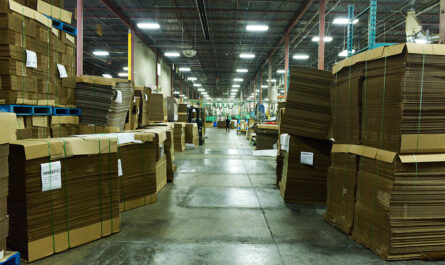Medical packaging serves a crucial role in maintaining sterility and preventing infections. From the manufacturing stage to storage and transportation to the point of use in an operating room or clinic, protective packaging aims to keep medical products free from contamination. Whether it’s sterile sutures, scalpels, catheters or other implantable devices, non-sterile packaging could compromise a procedure and put a patient’s health at serious risk.
Standards and Regulations
To help ensure packaging meets stringent sterility requirements, healthcare systems worldwide have established standards and regulations. In the United States, organizations like the Food and Drug Administration (FDA) provide guidelines on package design, materials selection, sealing methods and validation testing. Packages must demonstrate an extremely low probability of any microbes passing through intact packaging and compromising the contents. Manufacturers follow quality management protocols to consistently meet these performance criteria and verify packages maintain sterility under normal transport and storage conditions over the labeled shelf life.
Protection from Manufacturing
The Sterile Medical Packaging process begins in manufacturing cleanrooms, where medical products undergo rigorous cleaning and sterilization treatments like steam sterilization or radiation. Here, critical barriers like blister packs, peel-pouches or wrap-and-fold systems provide the first layer of protection, keeping assembled product components and unit packages free from contaminants during production, inspection and sealing operations. Barrier materials like plastic films, paper/plastic laminates and foil provide an effective microbial seal to maintain sterility post-processing. Most manufacturing cleanrooms also utilize air shower entry systems, protective clothing for personnel and stringent controls over raw materials, work-in-process handling and facility sanitization.
Safe Transportation and Storage
For sterile medical packaging, the role of prevention does not end after sterilization. Packages must also withstand distribution environments to arrive at their destination without compromising the sterility assurance level. This requires robust designs unaffected by variable temperature and humidity conditions during storage and shipping. Common hurdles addressed include resisting puncture or tears from impacts and maintaining barrier integrity when compressed alongside other packages in containers or on pallets. Tamper-evident seals and serialized package tracking add an important layer of security. With effectiveness validated through distribution simulation testing, today’s sterile packaging solutions deliver reliability throughout the supply chain.
Meeting Intraoperative Demands
In the hospital setting, opening sterile wrap or peel-pouches with clean technique maintains the aseptic field. Packages are designed for quick and easy access while minimizing hand contact with the medical product or opening edges. Printed indicators help surgical staff visually confirm package integrity before use. Some packaging systems now integrate RFID tags to enable automated tracking of used surgical trays and instruments for reprocessing. As the final barrier before product exposure within the sterile field, medical packaging technology continues advancing to satisfy the diverse needs of operating rooms and procedural areas where split-second intervention is routine and contaminant-free conditions are mission critical.
Sustaining Safety to the Patient
The purpose of sterile medical packaging is ultimately to protect patients undergoing surgeries and invasive procedures. Whether implanting a joint replacement or treating a wound with sterile dressings, prevention of infection can mean the difference between a successful recovery and serious complications like sepsis. Through their role safeguarding sterility from manufacturing to point of use and beyond, innovative package designs significantly contribute to public healthcare by sustaining vital product and environmental safeguards. Looking ahead, emerging technology in materials science, clean manufacturing and digital solutions will surely further drive this critical function to support even higher levels of safety, quality and convenience within medical systems worldwide.
*Note:
1. Source: Coherent Market Insights, Public sources, Desk research
2. We have leveraged AI tools to mine information and compile it




